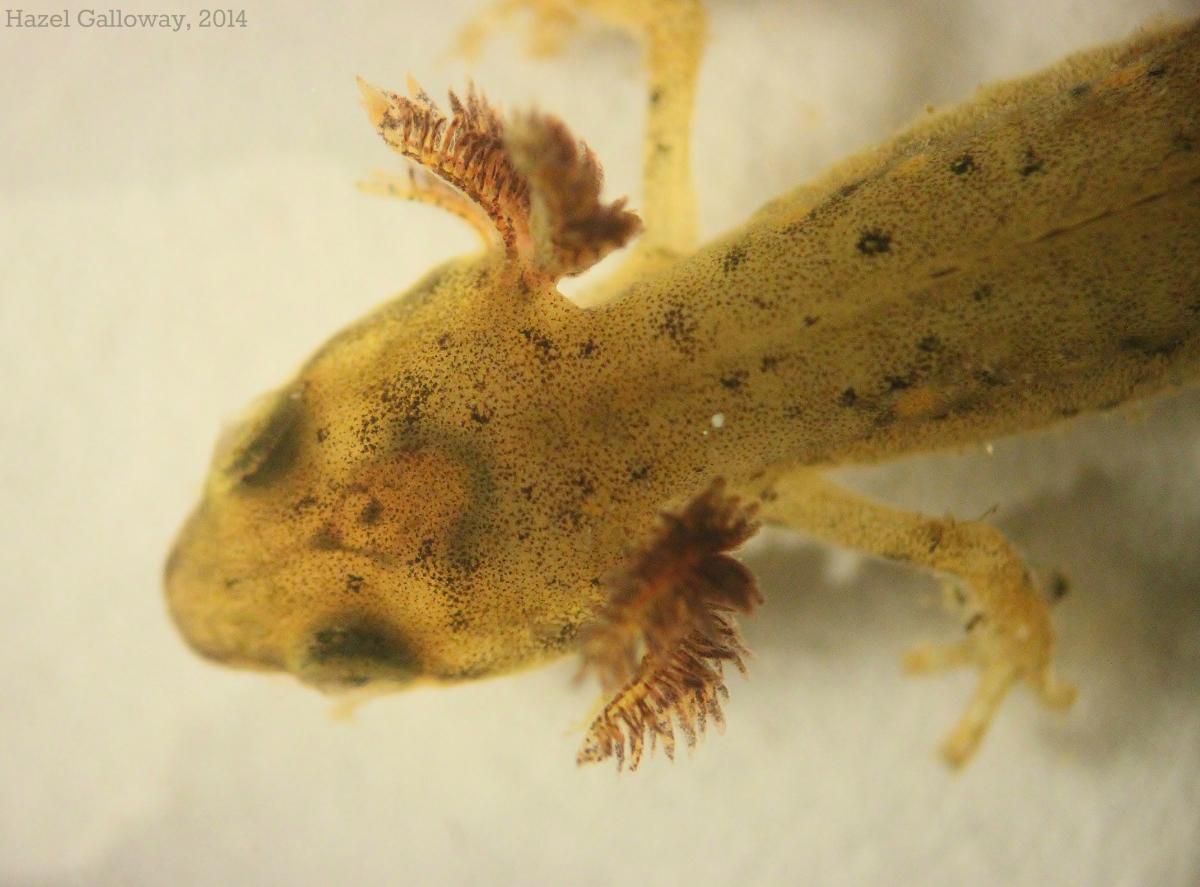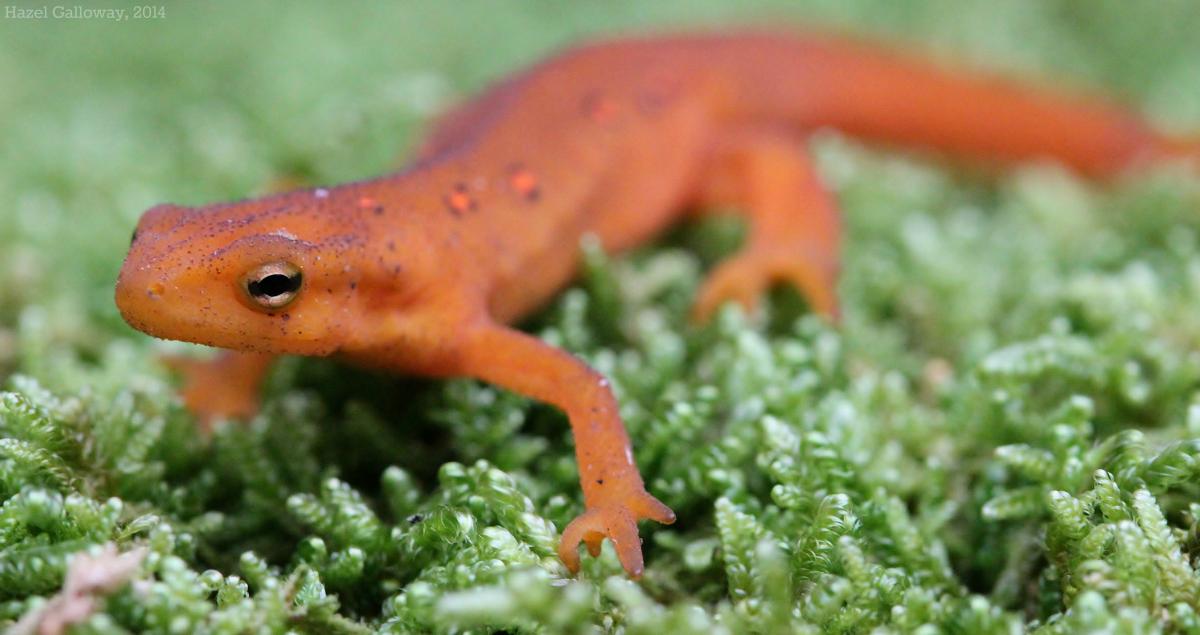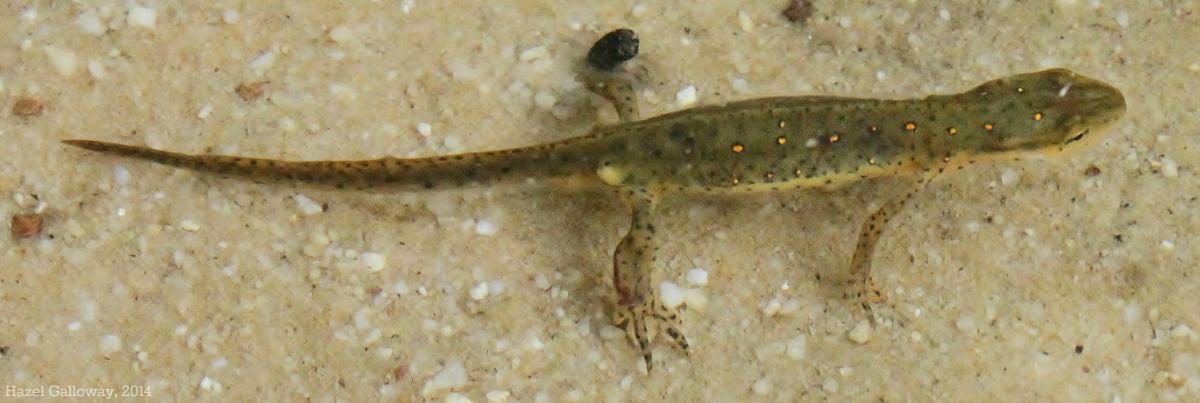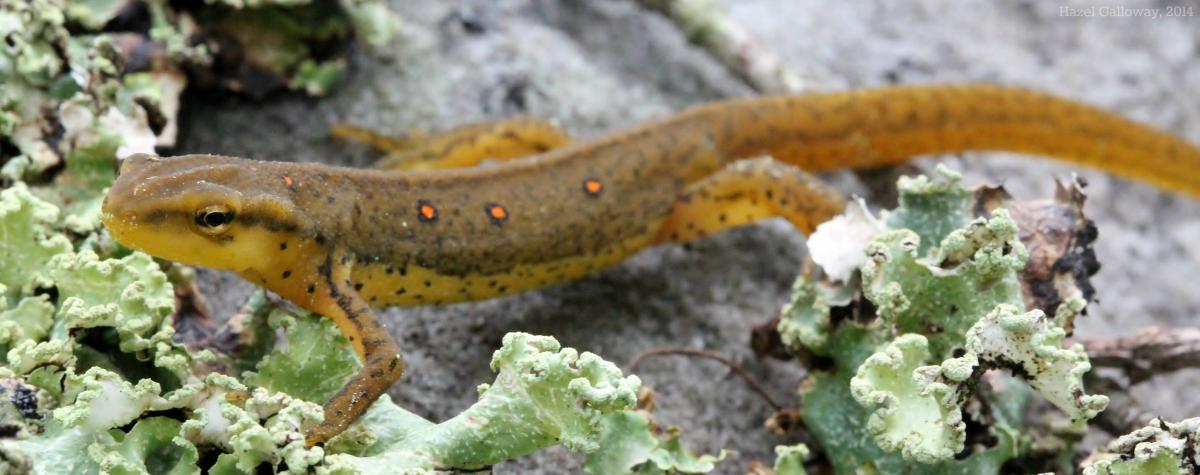 Alone among salamanders found at the station, the eastern red-spotted newt is a member of Salamandridae, the family that comprises all “true salamanders” and newts. It is one of only 7 species of newt in North America, out of only 87 species worldwide. However, this prolific newt is second to only one other US salamander in the extent of its distribution—they are found throughout the eastern US, as far west as Texas and Minnesota. Although no one feature distinguishes newts from other salamanders, they tend to spend more time in the water as adults and have a more complex courtship system.
Alone among salamanders found at the station, the eastern red-spotted newt is a member of Salamandridae, the family that comprises all “true salamanders” and newts. It is one of only 7 species of newt in North America, out of only 87 species worldwide. However, this prolific newt is second to only one other US salamander in the extent of its distribution—they are found throughout the eastern US, as far west as Texas and Minnesota. Although no one feature distinguishes newts from other salamanders, they tend to spend more time in the water as adults and have a more complex courtship system.
The larvae in this species measure less than a centimeter in length when they hatch from eggs attached singly to underwater vegetation. They spend the next 2-5 months of their lives living in the sediment and debris at the bottom of the pond, hunting small aquatic invertebrates while avoiding predators that include the adult newts themselves. During the larval period, the newts acquire oxygen from the water via feathery gills that protrude from their necks. When they metamorphose into terrestrial red efts, they acquire a pair of lungs which they use for the rest of their life (even upon re-entering the water as adults, they continue to breathe air). At the same time, their two-chambered heart develops into a three-chambered one in order to provide adequate circulation in their new, terrestrial environment. Depending upon the population, the size of newly-metamorphosed efts varies from 2-4 cm.
Red efts are the juvenile form of the aquatic newt. Efts are a bright orange-to-red color, marked with the black-rimmed, red spots that give the species its common name. This aposematic coloration serves to warn potential predators that the skin of N. v. viridescens carries tetrodotoxin, a neurotoxin that makes them unpalatable, and, in some cases, deadly to predators. Many predators avoid red efts on sight; garter snakes, crayfish, and beetle larvae have all been observed making “agitated mouth movements” after predation attempts. The level of tetrodotoxin in the skin of efts is about 10 times the amount found in adults’ skin.  Work done by the Brodie lab suggests a predator-prey “arms race” between a related species of newt and garter snakes, which exhibit varying levels of resistance to tertrodotoxin in different parts of their range. Naturally, garter snakes with a higher resistance level have more prey available to them, and therefore are more successful and reproduce more. Similarly, because newts producing lower levels of tetrodotoxin in suffer from higher predation, more toxic newts are more successful. One study found that predator and prey were closely matched in their resistance and toxicity levels across part of the range, perhaps where continuing escalation of was too costly for one or both organisms involved.
Work done by the Brodie lab suggests a predator-prey “arms race” between a related species of newt and garter snakes, which exhibit varying levels of resistance to tertrodotoxin in different parts of their range. Naturally, garter snakes with a higher resistance level have more prey available to them, and therefore are more successful and reproduce more. Similarly, because newts producing lower levels of tetrodotoxin in suffer from higher predation, more toxic newts are more successful. One study found that predator and prey were closely matched in their resistance and toxicity levels across part of the range, perhaps where continuing escalation of was too costly for one or both organisms involved.
After 2-7 years as terrestrial efts, the newts return to the water to breed. They can live for up to 15 years in total, sometimes spending the entirety of their adulthood as aquatic newts. However, adults in some populations abandon the water seasonally during the nonbreeding season. These terrestrial adults  sport more muted colors than the juveniles. Mating, which occurs in the late fall or winter in the southeast US, is a complicated ritual that begins when males release pheromones into the water to attract females seeking mates. After a courtship ritual where the male grasps the female just behind her forelimbs with his hindlimbs and rubs her snout with the side of his head, he will drop a sperm packet that sinks to the bottom of the pond. The female must then pick it up with her cloaca, storing the sperm to later fertilize her eggs. Occasionally, male interlopers who fail in trying to break up a mating pair may simply drop a sperm packet of their own nearby, hoping the female will retrieve it instead. Females lay at least 200 eggs each breeding season,
sport more muted colors than the juveniles. Mating, which occurs in the late fall or winter in the southeast US, is a complicated ritual that begins when males release pheromones into the water to attract females seeking mates. After a courtship ritual where the male grasps the female just behind her forelimbs with his hindlimbs and rubs her snout with the side of his head, he will drop a sperm packet that sinks to the bottom of the pond. The female must then pick it up with her cloaca, storing the sperm to later fertilize her eggs. Occasionally, male interlopers who fail in trying to break up a mating pair may simply drop a sperm packet of their own nearby, hoping the female will retrieve it instead. Females lay at least 200 eggs each breeding season,  but because they only deposit a few each day, oviposition can take weeks.
but because they only deposit a few each day, oviposition can take weeks.
The newt was captured in the station pond, where a large population exists. Both the red efts and the terrestrial adults were found on Rt 613 after the recent rain.
Hazel Galloway
Sources:



